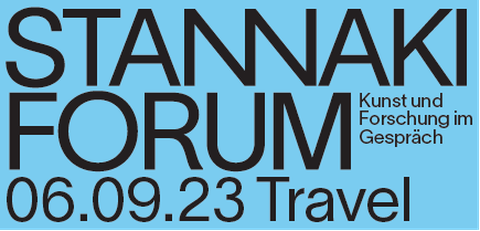Sep 04, 2023
Stannaki Forum: Art and Research in Dialogue – Captured in Watercolour 06.09.2023
The cross-collection research of the Dresden State Art Collections cordially invites you to the next Stannaki Forum in the Study Room of the Kupferstich-Kabinett in the Royal Palace in Dresden!
The event corresponds with the current exhibition "Connecting Worlds: Artists & Travel" (08.07.2023-08.10.2023) at the Kupferstich-Kabinett Dresden, in which the object from the conversation can be seen.
Captured in Watercolour
Wednesday, September 6, 6 pm.
Mabe Bethônico, Jane Boddy and Malina Mallach in conversation, moderated by Paul Goodwin.
Study room, Kupferstich-Kabinett, Royal Palace, Dresden.
Free entry, no registration.
The Event will be held in English.
Participation via Zoom.
+++ Please note that the Royal Palace including its museums will be closed on this day due to urgent maintenance work until the beginning of the event! +++
In the colony of “Dutch Brazil” conquered in 1630 by the Dutch West India Company (WIC), Zacharias Wagner, who grew up in Dresden, completed his “Thier Buch” (Book of Animals, 1634-1641): There, he depicted the Brazilian animal and plant world in detail in 110 watercolours and commented on them. Wagner, who was in the service of the WIC, also portrayed indigenous and Afro-Brazilian people in it, though he did not specify their identities. He further illustrated various scenes that reflect his view on life in colonial Brazil: including, as almost unique motif in the 17th century, a slave market in the central square of the town Recife.
Wagner’s comments not do not solely reflect a (scientific) interest in knowledge, but also the curiosity about motifs beyond his European visual conventions. Written in German, he presumably put down his impressions from the “New World” for himself and his family. In Dresden, the work is first mentioned in 1738 in the inventory of the electoral collections. At that time, the Saxon’s court’s interest in so-called “exotica” was nothing new: between courtly representation, promotion of science and economic interests, the court’s appropriation and staging of that which pointed beyond Europe also always meant the exaltation of its own culture.
In the Stannaki Forum, the artist Mabe Bethônico as well as the art historians Jane Boddy (Kupferstich-Kabinett, SKD) and Mailena Mallach (Kupferstich-Kabinett, SKD) talk about the visual grammar of the watercolours from the “Thier Buch” and question the representations of Black and indigenous people created in a colonial context from today’s perspective. Moderated by curator, researcher and educator Paul Goodwin.
The Stannaki Forum is a format of cross-collection research at the Dresden State Art Collections that promotes the connection between art and research, as well as transdisciplinary dialogue.
Across collections, in conversations between guests and SKD staff, global processes are explored as diasporic histories of knowledge.
The forum is named after Tuski Stannaki. He was a representative of the indigenous Muskogee community in Northeast America who lived at the Saxon court in the context of transatlantic trade beginning in 1722.
The department thanks Craig Koslovsky for expert advice on Tuski Stannaki as the namesake of the forum. Programming for the series is advised by Talking Objects Lab.
The event is supported by the Federal Government Commissioner for Culture and the Media as part of the project "Museums as Active Places of Democracy" (MODemo).
We look forward to seeing you and talking with you.
Doreen Mende and Team
